The work required:
Repair of brick, flint and masonry work to the Tower.
The photos below show examples of the defects which had to be remedied. For example:
Some of the brickwork and associated pointing was severely eroded:
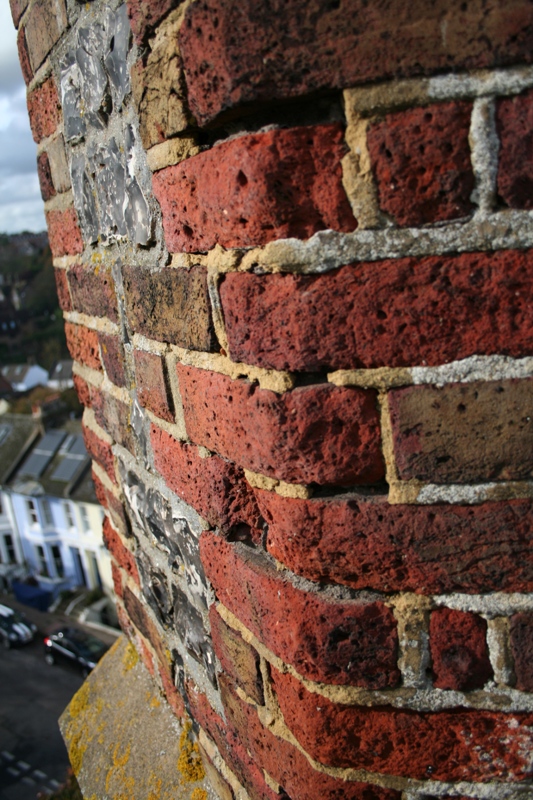
Many flints had either dropped out or become loose – replacement and re-pointing was therefore required:
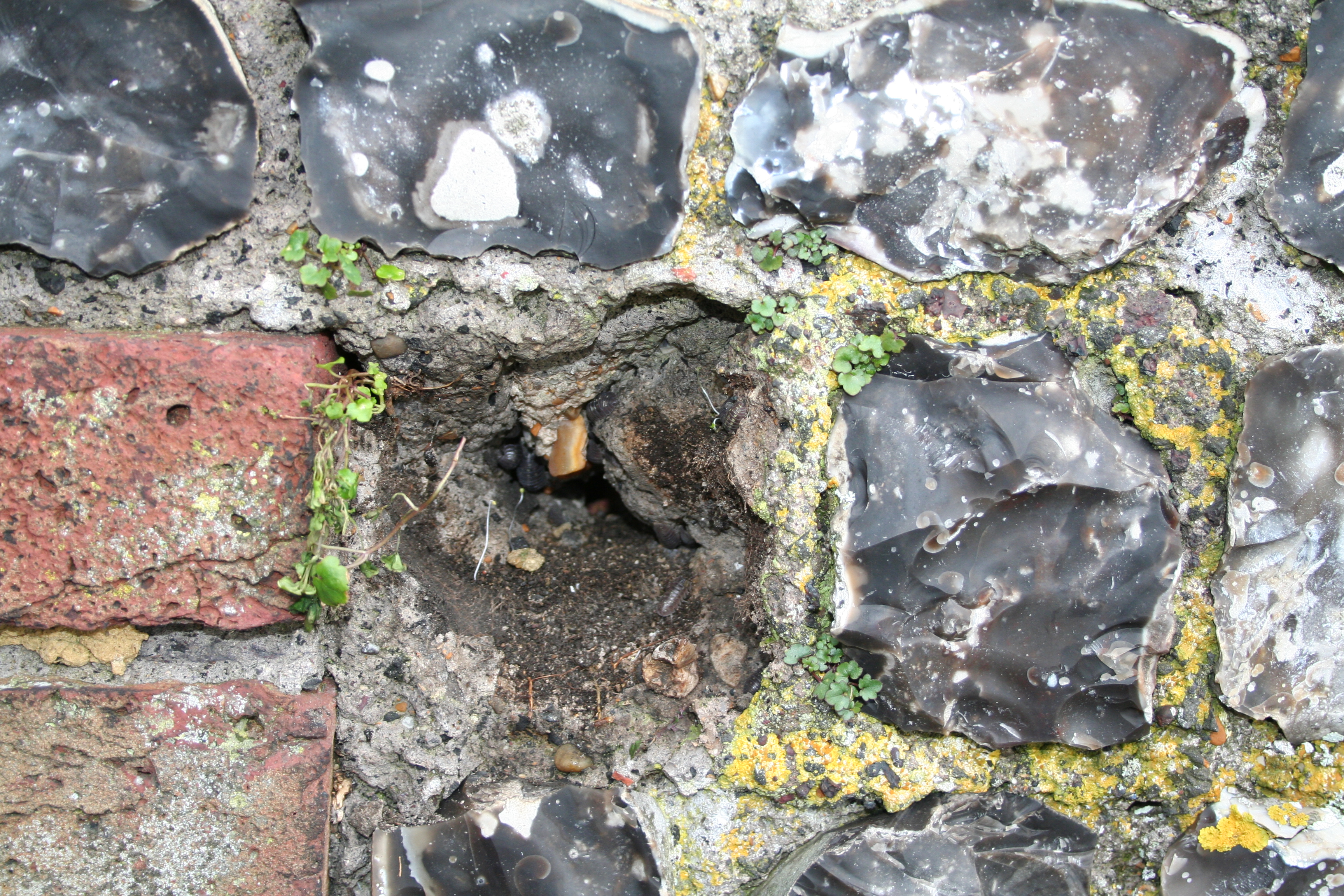

These two photos show the Roman cement string courses on the Tower in an advanced state of deterioration:
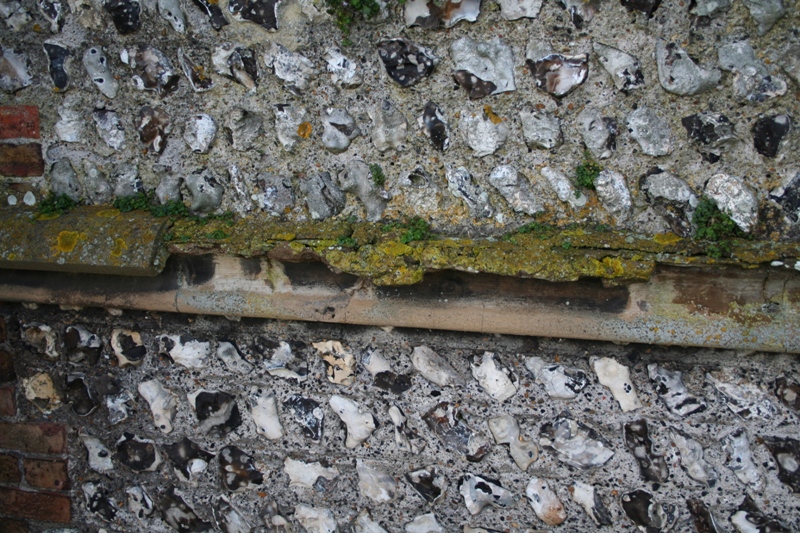
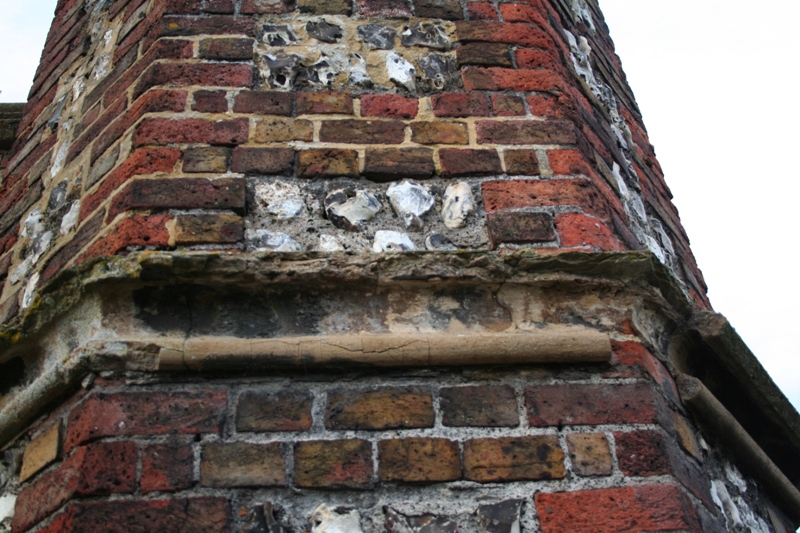
Vegetation becoming established within the crevices of the structure has been an ongoing problem for many years, particularly because of the high cost of providing safe access for repairs at such a height:
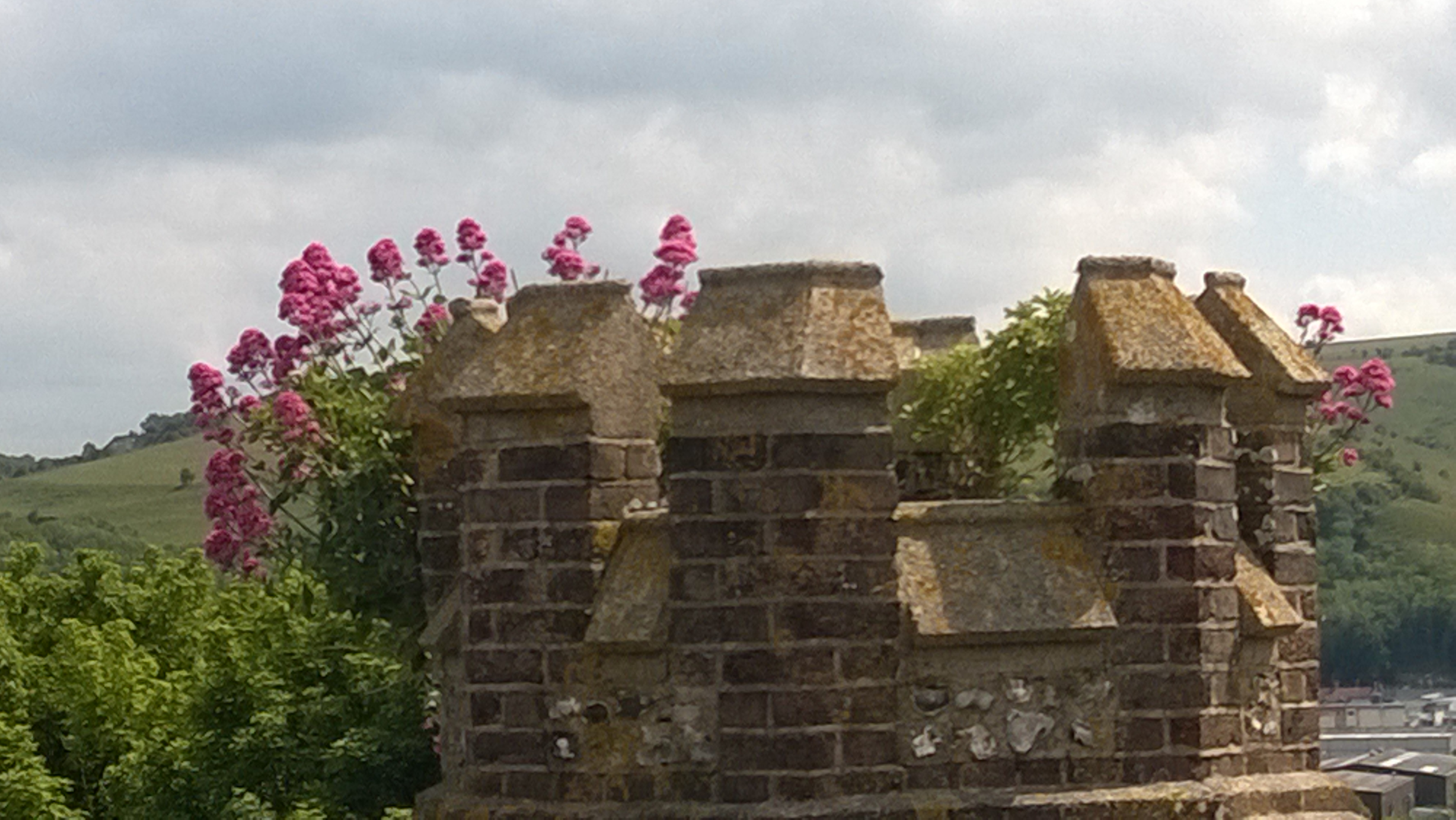
Click this link for photos of the brick, flint and masonry repairs in progress, and of the completed work.
New drainage works
Most of the rainwater downpipes taking the roof drainage were made of asbestos cement, and needed to be replaced with cast iron:
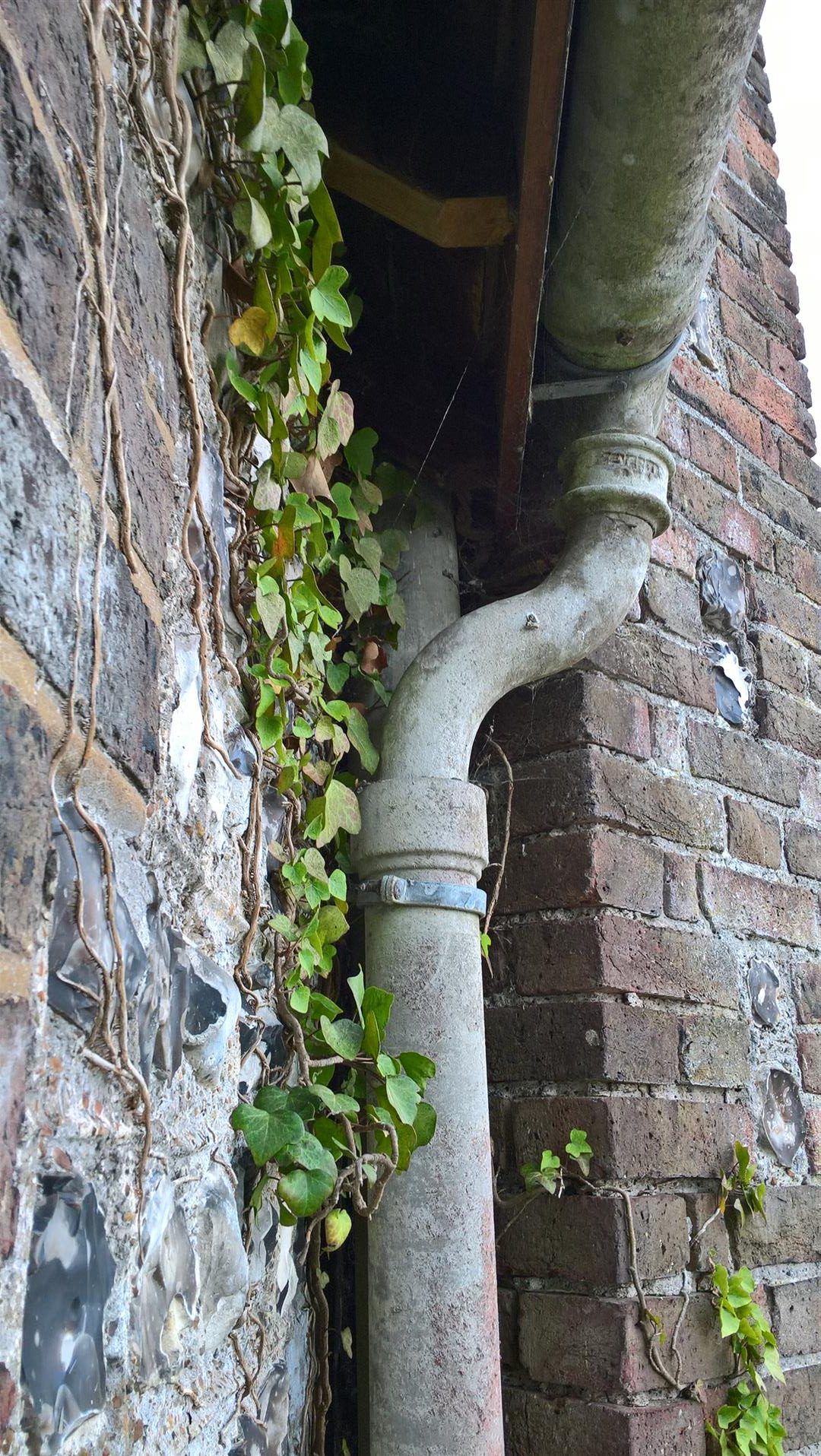
In order to safeguard the stability of the church structure, a recent structural engineer’s survey recommended the disposing of the roof drainage further away from the building than at present, by constructing two new soakaways in the churchyard.
Click this link for photos of the new drainage work in progress, and the completed work.
Tree management
A further recommendation was to remove the trees which had grown too close to the structure, and which posed a risk of root damage and shrinkage to the church foundations:
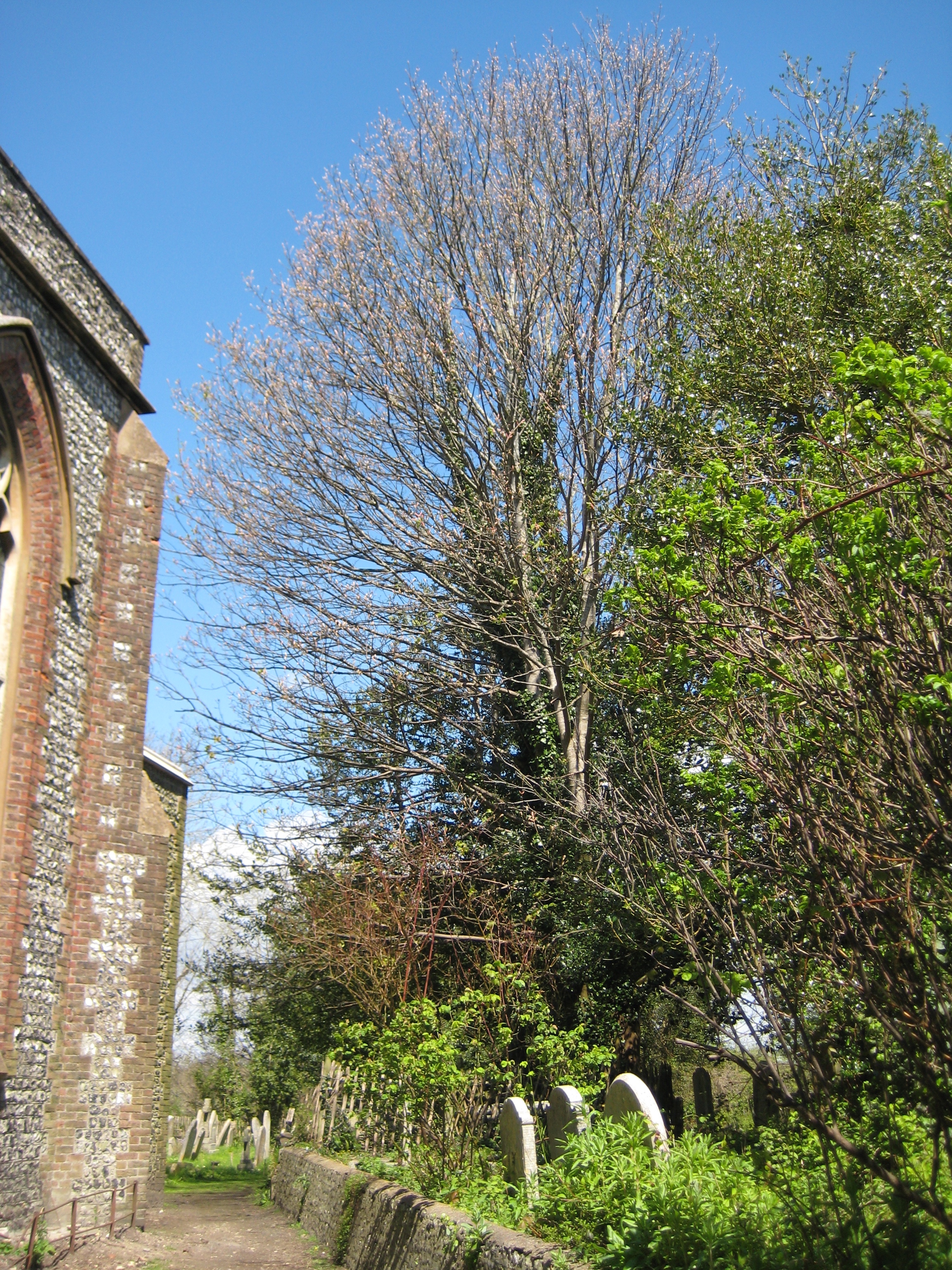
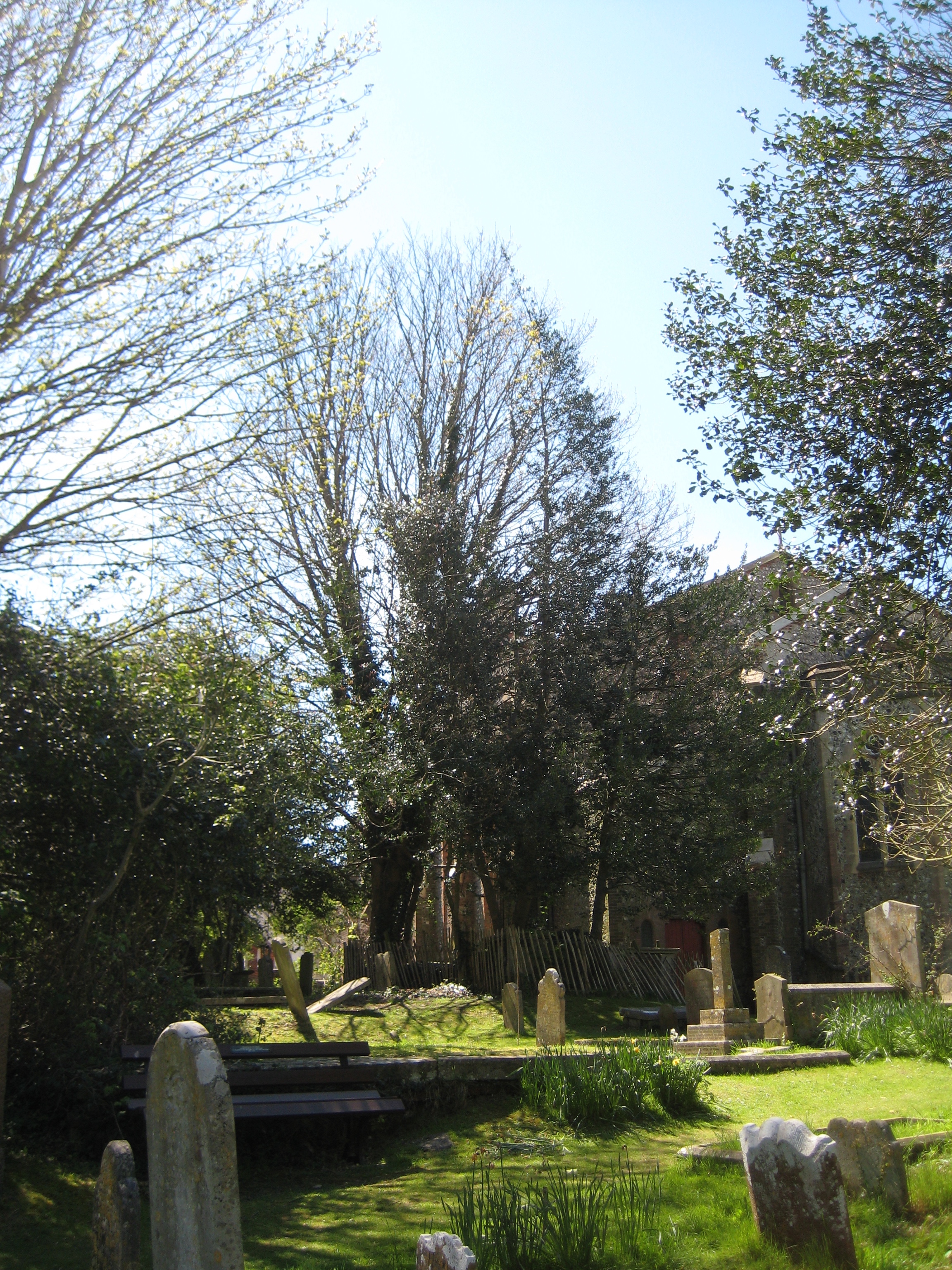
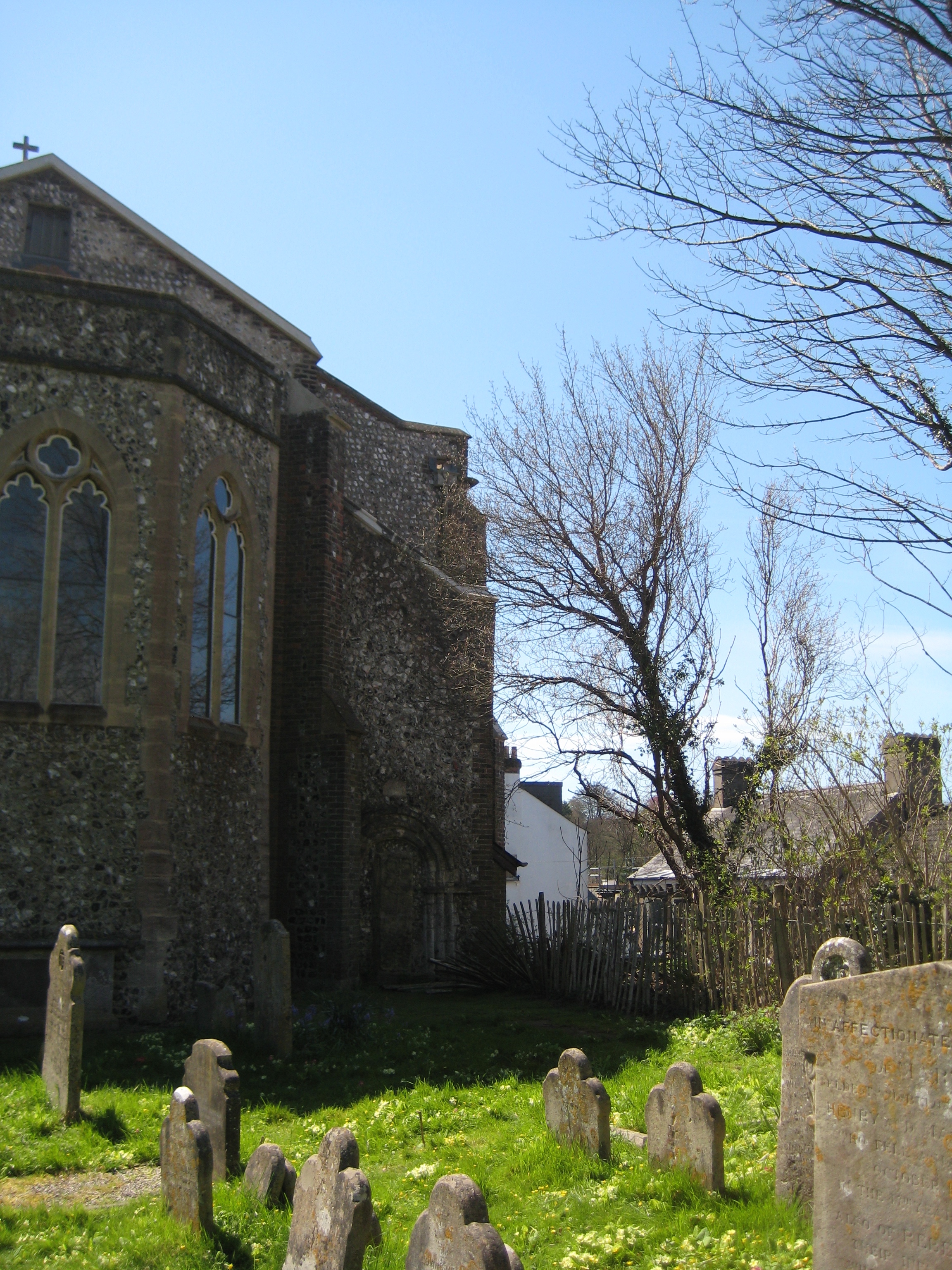
Click this link for photos of tree management in progress




No Comments
Add a comment about this page